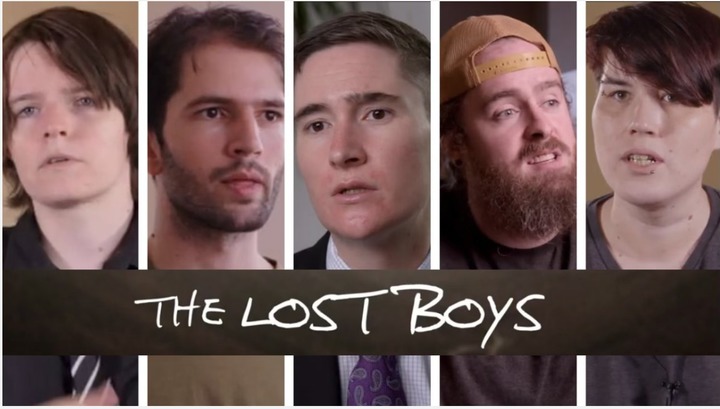Gender Ideology
Lost Boys: Transgender ‘Care’ is Castration by Another Name
In a recent interview with Brandon Showalter of The Christian Post, Forrest Smith told his story. After a struggle with mental illness and complicated family circumstances, Smith began hormone therapy at age 20 and lived for five years identifying as a woman in Portland, Oregon, relying largely on subsidized housing to survive. At that point, he went the rest of the way. He got breast implants “which permanently damaged my chest” and a double orchiectomy (the surgical removal of both testicles) “which permanently sterilized me—it is surgical castration.” He regretted the decision immediately and began to detransition months later.
Smith was on the list for other transgender surgeries, including the surgical removal of his penis and a “vaginoplasty,” the attempted creation of a neo-vagina, but decided not to go through with them. He was promptly dumped by his therapists, and medical experts lost interest in his plight. Several of them told him that he needed to “finish the job.” After a sustained search, he found a good male counselor to work with. The greatest betrayal, in his view, was his church community, which had celebrated his gender dysphoria and encouraged him to transition. Despite this harrowing endeavour, Smith says he’s still able to be grateful that his experience was not worse. “I’m glad no more damage was done to my body. I did come out of it alive.”
It is easy to forget what the transgender debate is really about, cloaked as it is in the Orwellian language of “gender-affirming care.” In fact, we are castrating men and boys. Despite how grotesque these details are, it is essential that we understand what trans activists and their political allies are talking about when they advocate “gender-affirming care.” They speak with a vocabulary that is carefully curated to hide the truth. There is nothing “affirming” about this ‘care.’ Understanding the mutilation that young people are experiencing is necessary to expose the evils of the trans movement, which dominates our cultural debates.
There is perhaps no better public example of the horrors of transitioning than Jazz Jennings. He is the young star of a reality show on growing up transgender after his parents “socially transitioned” him at the age of five. He had a hormone blocker implanted into his arm to prevent puberty at age 11. As a result, his penis was too small to create a neo-vagina, and surgeons had to improvise, using surgically removed stomach lining. The neo-vagina split apart, and Jennings has had multiple follow-up surgeries to fix the mess. He has become both obese and deeply depressed.
The TLC reality show features his mother worrying that he will forget to dilate his neo-vagina every day, which is necessary because the body treats it as a wound that it tries to begin healing. Immediately post-surgery, this must be done for at least two hours daily, and for shorter lengths of time later—for a lifetime. If he doesn’t do it, Jennings’ mother commented, she will “wring [Jazz’s] neck.” Jennings is one of the world’s most visible transgender superstars, with a bestselling book targeted at children titled I Am Jazz that is often used in schools. But if you listen to Jennings himself—who has endured the trauma of being a guinea pig since he was a toddler—all of it has failed.
“I just want to feel like myself, like that’s it,” he says at one point on the show. “All I want is to be happy and feel like me, and I don’t feel like me, ever.” That is not the reality that Jennings’ mother and his supportive phalanx of trans activists were hoping to show—but it is the lived reality of many victims of the transgender cult.
Male victims of the transgender craze are the subject of a new documentary by Jennifer Lahl released in January, Lost Boys: Searching for Manhood. Lahl has tackled the trans debate before, most recently in her must-see film The Detransition Diaries: Saving Our Sisters. Lost Boys tells the stories of five detransitioned men who explain what led them on the path to transition and the cultural forces contributing to gender dysphoria in males. It is an important film that offers intelligent and thoughtful answers to a question many have been asking: Why do so many boys think they have been born in the wrong body?
Dr. Joe Burgo, who has worked with those suffering from gender dysphoria for years, observed that rigid gender stereotypes are frequently a driver. Boys disinterested in cultural markers of masculinity such as sports or physical competition, for example, are frequently “told they’re girls.” That seems to be the story of most of the young men interviewed. To tell boys that there is one specific way to be a boy that excludes their own interests or character is to ensure that some boys, in our era of gender confusion, might start wondering if they are something else—questions that will be answered by therapists, teachers, and other ideologues.
Young people navigating the confusing maze of adolescence, bullying, and mental illness in a world without boundaries are hearing the siren song of the trans activists: We know what’s wrong with you. We’ll fix you, and you’ll feel like you. Better yet, you’ll be celebrated for your bravery. As one young man put it sadly: “It’s self-hatred, not self-love, that drives you [to transition].” As has been previously reported, autistic boys are particularly vulnerable. The autistic mind is very black and white. If they look at the masculine category and conclude that they lack certain characteristics, they might conclude that they are a woman. The Substack newsletter Parents With Inconvenient Truths About Trans (PITT) is packed with heartbreaking stories of how autistic children are sucked into the gender cult.
READ THE REST OF THIS COLUMN HERE








